Currency Notes
Bowie Bucks
Finance & Development, March 2016, Vol. 53, No. 1
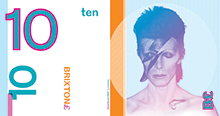
Municipalities and neighborhood organizations establish local currencies to invigorate their communities
David Bowie’s death in January 2016 struck a chord with baby boomers who mourned the eclectic musician’s tunes of their youth, while millennials recalled his cameo appearance in the movie Zoolander and his compositions in The Life Aquatic. But it’s not only as an entertainer that Bowie was innovative.
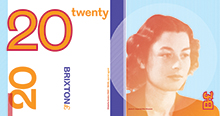
In 1997 the pop star pioneered Bowie bonds, offering investors the opportunity to purchase a share in future royalties of 25 of his albums. And in 2011 he lent his support to the local currency of his birthplace, the south London neighborhood of Brixton, by agreeing to be featured on its £10 note.
The Brixton pound is part of a resurgence since the turn of the century of local currencies, which hark back to an earlier era.
(Not so) golden years
During the Great Depression, uncertainty led to hoarding and thus shortages of currency. U.S. economist Irving Fisher advocated “stamp scrip”—time-stamped currencies that effectively carried a negative interest rate, called demurrage, if not spent quickly enough. This encouraged spending and turnover of the currency. Some municipalities resorted to scrip, which merchants were assured they could eventually hand in to city hall, school, or community organizations for U.S. dollars. Austria and Germany also issued scrip during the Depression.
Today, local currencies are being adopted, primarily in Europe and North America, to cultivate a sense of community, supporting locally owned businesses by attracting “main street” and “buy local” spending. In Brixton alone, £150,000 worth of the neighborhood currency is in circulation, boosting customer loyalty. Money spent with independent businesses circulates within the local economy up to three times longer than when it’s spent with national chains, according to research by the New Economics Foundation.
The few circulating, paper-based—as opposed to virtual—local currencies also offer an outlet for local creativity and egalitarianism. “You look at regular currency, with all the dead presidents, monarchs, and establishment tropes and you see the cold dead hand of hierarchy and history. It can’t be much fun designing money whose sole purpose seems to be reminding the great unwashed that the wealth isn’t really theirs,” says Charlie Waterhouse, Brixton pound designer.
The second issue of the Brixton series, with £1, £5, £10, and £20 notes, features well-known people with Brixton connections. “We wanted to ensure there was a good balance, says Waterhouse. “Len Garrison was a notable black archivist who founded Brixton’s Black Cultural Archive; [Miami Heat basketball player] Luol Deng comes from a different era in Brixton’s immigration history, and talks of the opportunity a place like Brixton provides regardless of race.”
Heroes
British secret agent Violette Szabo is on Brixton’s £20 note. The designer says, “London is full of statues to privileged warmongers we’re supposed to remember as heroes—and here was a genuine hero, an ordinary shopgirl whose life became extraordinary thanks to World War II. She felt right for the notes—and was a nice nod to an earlier, more distant Brixton.”
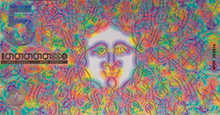
Brixton pounds are backed by pounds sterling, with 100 percent reserves in the local credit union. “While boosting demand in the local economy with vouchers that can only be spent in small businesses, the credit union is also bolstered with additional capital to make ethical loans to individuals and businesses in the area,” explains Tom Shakhli, Brixton pound general manager.
Security features form a fundamental part of the notes’ design. “The Brixton pound has more security features than notes from the Bank of England. Holographic film is die cut into editorial content; sequential numbering punches out of gold foil motifs; fluorescent inks are repeated throughout. And there are more features, which I’m not at liberty to mention!” adds Waterhouse.
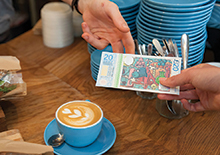
The United Kingdom’s first city-wide local currency, the Bristol pound, was established with advice from the Brixton team. Organizers say the currency fosters a sense of community and encourages creativity and grassroots activity. Like the London neighborhood currency, each Bristol pound is backed pound for pound by sterling deposits, so accepting the currency incurs no more financial risk than depositing money in a bank.
Today about a dozen local currencies operate in the United Kingdom alone. The Bank of England has studied local currencies and concludes that given their limited size and number, “they are unlikely to present a risk to the Bank’s monetary or financial stability objectives.”
Dollar days
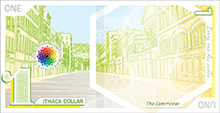
In the United States, the city of Ithaca, New York, supports “Ithacash.” Founder Scott Morris says Ithaca dollars (i$) “provide our region with a medium of exchange that works more equitably for our community and helps make our economy more efficient.” Bucking the trend, Ithaca is about to launch physical currency notes to add to its now-virtual currency.
As circulation of legal tender national currency cedes to virtual transactions, the personal appeal of local currencies is their comparative advantage. “Since Bowie’s death there has been a lot of interest in the B£10 note,” says Waterhouse. “The Brixton pound note has taken on extra meaning since his death, serving as a reminder of Bowie and all the things people loved about him.” ■


